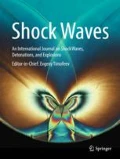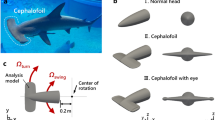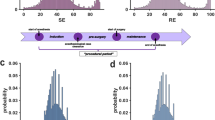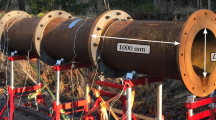Abstract
The development of an advanced blast simulator (ABS) has enabled the reproducible generation of single-pulse shock waves that simulate free-field blast with high fidelity. Studies with rodents in the ABS demonstrated the necessity of head restraint during head-only exposures. When the head was not restrained, violent global head motion was induced by pressures that would not produce similar movement of a target the size and mass of a human head. This scaling artefact produced changes in brain function that were reminiscent of traumatic brain injury (TBI) due to impact-acceleration effects. Restraint of the rodent head eliminated these, but still produced subtle changes in brain biochemistry, showing that blast-induced pressure waves do cause brain deficits. Further experiments were carried out with rat brain cell aggregate cultures that enabled the conduct of studies without the gross movement encountered when using rodents. The suspension nature of this model was also exploited to minimize the boundary effects that complicate the interpretation of primary blast studies using surface cultures. Using this system, brain tissue was found not only to be sensitive to pressure changes, but also able to discriminate between the highly defined single-pulse shock waves produced by underwater blast and the complex pressure history exposures experienced by aggregates encased within a sphere and subjected to simulated air blast. The nature of blast-induced primary TBI requires a multidisciplinary research approach that addresses the fidelity of the blast insult, its accurate measurement and characterization, as well as the limitations of the biological models used.








Similar content being viewed by others
References
Ling, G., Bandak, F., Armonda, R., Grant, G., Ecklund, J.: Explosive blast neurotrauma. J. Neurotrauma 26, 815–825 (2009). doi:10.1089/neu.2007.0484
Tanielian, T., Jaycox, L.H., Schell, T.L., Marshall, G.N., Burnam, M.A., Eibner, C., Karney, B.R., Meredith, L.S., Ringel, J.S., Vaiana, M.E.: Invisible Wounds of War. Psychological and Cognitive Injuries, Their Consequences, and Services to Assist Recovery. RAND Corp, Santa Monica (2008)
Elder, G.A., Stone, J.R., Ahlers, S.T.: Effects of low-level blast exposure on the nervous system: Is there really a controversy? Front. Neurol. 5, 269 (2014). doi:10.3389/fneur.2014.00269
Warden, D.L., French, L.M., Shupenko, L., Fargus, J., Riedy, G., Erickson, M.E., Jaffee, M.S., Moore, D.F.: Case report of a soldier with primary blast brain injury. Neuroimage 47, T152–T153 (2009). doi:10.1016/j.neuroimage.2009.01.060
Guy, R.J., Glover, M.A., Cripps, N.P.J.: Primary blast injury: pathophysiology and implications for treatment. Part III: Injury to the central nervous system and the limbs. J. R. Nav. Serv. 86, 27–31 (2000)
Yilmaz, S., Pekdemir, M.: An unusual primary blast injury: Traumatic brain injury due to primary blast. Am. J. Emerg. Med. 25, 97–98 (2007). doi:10.1016/j.ajem.2006.04.014
Elder, G.A., Mitsis, E.M., Ahlers, S.T., Cristian, A.: Blast-induced mild traumatic brain injury. Psychiatr. Clin. N. Am. 33, 757–781 (2010). doi:10.1016/j.psc.2010.08.001
Palma, J.: Blast injury of the lungs. With comment on immersion blast injury. Hawaii Med. J. 10, 42–44 (1942)
Palma, J., Uldall, J.J.: Immersion blast injuries. US Nav. Med. Bull. 41, 3–8 (1943)
Pugh, H.L.: Surgical report on immersion blast injuries. US Nav. Med. Bull. 41, 9–12 (1943)
Yaguda, A.: Pathology of immersion blast injury. US Nav. Med. Bull. 44, 232–240 (1945)
Clark, S.L., Ward, J.W.: The effects of rapid compression waves on animals submerged in water. Surg. Gynecol. Obstet. 77, 403–412 (1943)
Freidell, M.T., Ecklund, A.M.: Experimental immersion blast injury. Preliminary report. US Nav. Med. Bull. 41, 353–363 (1943)
Cudahy, E., Parvin, S.: The Effects of Underwater Blast on Divers. Naval Submarine Medical Research Laboratory, NSMRL Report 1218, pp. 1–62 (2001)
Hooker, D.R.: Physiological effects of air concussion. Am. J. Physiol. 67, 219–374 (1924)
Cassen, B., Kistler, K., Mankiewicz, W.: Some effects of air blast on mechanically constrained mice. J. Aviat. Med. 23, 120–129 (1952)
Zuckerman, S.: Experimental study of blast injuries to the lungs. Lancet 236, 219–224 (1940). doi:10.1016/S0140-6736(01)08726-8
DePalma, R., Burris, D.G., Champion, H.R., Hodgson, M.J.: Blast injuries. N. Engl. J. Med. 352, 1335–1342 (2005). doi:10.1056/NEJMra042083
Katz, E., Ofek, B., Adler, J., Abramowitz, H.B., Krausz, M.M.: Primary blast injury after a bomb explosion in a civilian bus. Ann. Surg. 209, 484–488 (1989)
Coppel, D.L.: Blast injuries of the lungs. Br. J. Surg. 63, 735–737 (1976). doi:10.1002/bjs.1800631003
Yang, Z., Wang, Z., Tang, C., Ying, Y.: Biological effects of weak blast waves and safety limits for internal organ injury in the human body. J. Trauma 40(Suppl. 3), S81–S84 (1996)
Jones, E., Fear, N.T., Wessely, S.: Shell shock and mild traumatic brain injury: A historical review. Am. J. Psychiatr. 164, 1641–1645 (2007). doi:10.1176/appi.ajp.2007.07071180
Myers, C.J.: A contribution to the study of shell shock. Lancet 185(4772), 316–320 (1915). doi:10.1016/S0140-6736(00)52916-X
Mott, F.W.: The effects of high explosives upon the central nervous system. Lancet 187, 331–338; 441–449; 545–553 (1916). doi:10.1016/S0140-6736(00)52963-8, 10.1016/S0140-6736(01)11159-1, 10.1016/S0140-6736(01)11370-X
Mott, F.W.: The microscopic examination of the brains of two men dead of commotio cerebri (shell shock) without visible external injury. Br. Med. J. 2, 612–615 (1917)
Mott, F.W.: Mental hygiene in shell shock during and after the war. Br. Med. J. 2, 39–42 (1917)
Clemedson, C.-J.: Shock wave transmission in the central nervous system. Acta Physiol. Scand. 37, 204–214 (1956). doi:10.1111/j.1748-1716.1956.tb01356.x
Zuckerman, S.: Discussion of the problem of blast injuries. Proc. R. Soc. Med. 34, 171–192 (1941)
Fulton, J.F.: Blast and concussion in the present war. N. Engl. J. Med. 226, 1–8 (1942). doi:10.1056/NEJM194201012260101
Reid, F.: “His nerves gave way”: Shell shock, history and the memory of the First World War in Britain. Endevour 38, 91–100 (2014). doi:10.1016/j.endeavour.2014.05.002
Elder, G.A., Cristian, A.: Blast-related mild traumatic brain injury: Mechanisms of injury and impact on critical care. Mt. Sinai J. Med. 76, 111–118 (2009). doi:10.1002/msj.20098
Vasterling, J.J., Verfaielle, M., Sullivan, K.D.: Mild traumatic brain injury and posttraumatic stress disorder in returning veterans: Perspectives from cognitive neuroscience. Clin. Psychol. Rev. 29, 674–684 (2009). doi:10.1016/j.cpr.2009.08.004
Champion, H.R., Holcomb, J.B., Young, L.A.: Injuries from explosions: Physics, biophysics, and required research focus. J. Trauma 66, 1468–1477 (2009). doi:10.1097/TA.0b013e3181a27e7f
Hoge, C.W., McGurk, D., Thomas, J.L., Cox, A.L., Engel, C.C., Castro, C.A.: Mild traumatic brain injury in U.S. soldiers returning from Iraq. N. Engl. J. Med. 358, 453–463 (2008). doi:10.1056/NEJMoa072972
Gean, A.D.: Blast injury basics. In: Pine Jr., J.W., Shaw, R., Dinkel, A.G. (eds.) Chapter 3: Brain Injury. Applications from War and Terrorism. Wolters Kluwer Health/Lippincott Williams & Wilkins, Philadelphia (2014)
Ritzel, D.V., Parks, S.A, Roseveare, J., Rude, G., Sawyer, T.W.: Experimental blast simulation for injury studies. In: Proceedings of NATO HFM 207, Halifax (2011)
Needham, C.E., Ritzel, D., Rule, G.T., Wiri, S., Young, L.: Blast testing issues and TBI: Experimental models that lead to wrong conclusions. Front. Neurol. 6, 72 (2015). doi:10.3389/fneur.2015.00072
Sawyer, T.W., Wang, Y., Ritzel, D.V., Josey, T., Villanueva, M., Shei, Y., Nelson, P., Hennes, G., Weiss, T., Vair, C., Fan, C., Barnes, J.: High-fidelity simulation of primary blast: direct effects on the head. J. Neurotrauma 33, 1181–1191 (2016). doi:10.1089/neu.2015.3914
Chandra, N., Sundaramurthy, A.: Acute pathophysiology of blast injury-from biomechanics to experiments and computations: implications on head and polytrauma. In: Kobeissy, F.H. (ed.) Chapter 18: Brain Neurotrauma. Molecular, Neuropsychological and Rehabilitation Aspects. CRC Press/Taylor & Francis, Boca Raton (2016)
Arun, P., Spadaro, J., John, J., Gharavi, R.B., Bentley, T.B., Nambiar, M.P.: Studies on blast traumatic brain injury using in-vitro model with shock tube. NeuroReport 22, 379–384 (2011). doi:10.1097/WNR.0b013e328346b138
Effgen, G.B., Vogel III, E.W., Lynch, K.A., Lobel, A., Hue, C.D., Meaney, D.F., Bass, C.R., Morrison III, B.: Isolated primary blast alters neuronal function with minimal cell death in organotypic hippocampal slice cultures. J. Neurotrauma 31, 1202–1210 (2014). doi:10.1089/neu.2013.3227
Effgen, G.B., Hue, C.D., Vogel III, E., Panzer, M.B., Meany, D.F., Bass, C.R., Morrison III, B.: A multiscale approach to blast neurotrauma modeling: Part II: Methodology for inducing blast injury to in vitro models. Front. Neurol. 3, 23 (2012). doi:10.3389/fneur.2012.00023
Effgen, G.B., Ong, T., Nammalwar, S., Ortuño, A.I., Meaney, D.F., Bass, C.R., Morrison III, B.: Primary blast exposure increases hippocampal vulnerability to subsequent exposure: reducing long-term potentiation. J. Neurotrauma 33, 1901–1912 (2016). doi:10.1089/neu.2015.4327
Hue, C.D., Cao, S., Haider, S.F., Vo, K.V., Effgen, G.B., Vogel III, E., Panzer, M.B., Bass, C.R., Meaney, D.F., Morrison III, B.: Blood-brain barrier dysfunction after primary blast injury in vitro. J. Neurotrauma 30, 1652–1663 (2013). doi:10.1089/neu.2012.2773
Hue, C.D., Cao, S., Bass, C.R., Meaney, D.F., Morrison III, B.: Repeated primary blast injury causes delayed recovery, but not additive disruption, in an in vitro blood-brain barrier model. J. Neurotrauma 31, 951–960 (2014). doi:10.1089/neu.2013.3149
Hue, C.D., Cho, F.S., Cao, S., Bass, C.R., Meaney, D.F., Morrison III, B.: Dexamethasone potentiates in vitro blood-brain recovery after primary blast injury by glucocorticoid receptor-mediated upregulation of ZO-1 tight junction protein. J. Cereb. Blood Flow Metab. 35, 1191–1198 (2015). doi:10.1038/jcbfm.2015.38
Kane, M.J., Angoa-Perez, M., Francescutti, D.M., Sykes, C.E., Briggs, D.I., Leung, L.Y., Vandevord, P.J., Kuhn, D.M.: Altered gene expression in cultured microglia in response to simulated blast overpressure: Possible role of pulse duration. Neurosci. Lett. 522, 47–51 (2012). doi:10.1016/j.neulet.2012.06.012
Leung, L.Y., Vandevord, P.J., Dal Cengio, A.L., Bir, C., Yang, K.H., King, A.I.: Blast related neurotrauma: A review of cellular injury. Mol. Cell Biomech. 5, 155–168 (2008). doi:10.3970/mcb.2008.005.155
Miller, A.P., Shah, A.S., Aperi, B.V., Budde, M.D., Pintar, F.A., Tarima, S., Kurpad, S.N., Stemper, B.D., Glavaski-Joksimovic, A.: Effects of blast overpressure on neurons and glial cells in rat organotypic hippocampal slice cultures. Front. Neurol. 6, 22 (2015). doi:10.3389/fneur.2015.00020
Panzer, M.B., Matthews, K.A., Yu, A.W., Morrison III, B., Meaney, D.F., Bass, C.R.: A multiscale approach to blast neurotrauma modeling: Part I—Development of novel test devices for in vivo and in vitro blast injury models. Front. Neurol. 3, 46 (2012). doi:10.3389/fneur.2012.00046
Ravin, R., Blank, P.S., Busse, B., Ravin, N., Vira, S., Bezrukov, L., Waters, H., Guerrero-Cazares, H., Quinones-Hinojosa, A., Lee, P.R., Fields, R.D., Bezrukov, S.M., Zimmerberg, J.: Blast shockwaves propagate Ca\(^{2+}\) activity via purinergic astrocyte networks in human nervous system cells. Sci. Rep. 6, 25713 (2016). doi:10.1038/srep25713
Ravin, R., Blank, P.S., Steinkamp, A., Rappaport, S.M., Ravin, N., Bezrukov, L., Guerrero-Cazares, H., Quinones-Hinojosa, A., Bezrukov, S.M., Zimmerberg, J.: Shear forces during blast, not abrupt changes in pressure alone, generate calcium activity in human brain cells. PLoS ONE 7(6), e39421 (2012). doi:10.1371/journal.pone.0039421
Sawyer, T.W., Lee, J., Villanueva, M., Wang, Y., Nelson, P., Song, Y., Hennes, G., Fan, C., McLaws, L.: The effect of underwater blast on aggregating brain cell cultures. J. Neurotrauma 34, 517–528 (2017). doi:10.1089/neu.2016.4430
Sawyer, T.W., Villanueva, M., Wang, Y., Ritzel, D.V., Josey, T., Nelson, P., Weiss, T., Song, Y., Vair, C., Fan, C.: Primary blast causes delayed effects without cell death in shell-encased brain cell aggregates. J. Neurotrauma (2017). doi:10.1089/neu.2016.4961
VandeVord, P.J., Leung, L.Y., Hardy, W., Mason, M., Yang, K.H., King, A.I.: Up-regulation of reactivity and survival genes in astrocytes after exposure to short duration overpressure. Neurosci. Lett. 434, 247–252 (2008). doi:10.1016/j.neulet.2008.01.056
Vogel III, E.W., Effgen, G.B., Patel, T.P., Meaney, D.F., Bass, C.R., Morrison III, B.: Isolated primary blast inhibits long-term potentiation in organotypic hippocampal slice cultures. J. Neurotrauma 33, 652–661 (2016). doi:10.1089/neu.2015.4045
Zander, N.E., Piehler, T., Boggs, M.E., Banton, R., Benjamin, R.: In vitro studies of primary explosive blast loading on neurons. J. Neurosci. Res. 93, 1353–1363 (2015). doi:10.1002/jnr.23594
Zander, N.E., Piehler, T., Banton, R., Boggs, M.: The effect of explosive blast loading on human neuroblastoma cells. Anal. Biochem. 504, 4–6 (2016). doi:10.1016/j.ab.2016.03.009
Josey, T., Ritzel, D.V., Sawyer, T.W.: Development of a miniature double Pitot-static probe and its application to calibrating blast flow conditions. In: Proceedings of the 24th Military Aspects of Blast and Shock Symposium, Halifax, 18–23 Sept 2016
Honegger, P.: Aggregating neural cell cultures. In: Current Protocols in Toxicology. Wiley, New York, Unit 12.9 (2003). doi:10.1002/0471140856.tx1209s15
Honegger, P., Defaux, A., Monnet-Tschudi, F., Zurich, M.-G.: Preparation, maintenance, and use of serum-free aggregating brain cell cultures. In: Costa, L.G., et al. (eds.) In Vitro Neurotoxicology: Methods and Protocols, Methods in Molecular Biology, vol. 758. Springer, New York (2011). doi:10.1007/978-1-61779-170-3_6
Sa Santos, S.S., Leite, S.B., Sonnewald, U., Carrondo, M.J.T., Alves, P.M.: Stirred vessel cultures of rat brain cells aggregates: Characterization of major metabolic pathways and cell population dynamics. J. Neurosci. Res. 85, 3386–3397 (2007). doi:10.1002/jnr.21409
Lee, J.J., Rude, G.: Methodologies and gauges for intracranial pressure measurements. In: Proceedings of the Personal Armour Systems Symposium (PASS), Amsterdam, 19–23 Sept 2016
Lu, J., Ng, K.C., Ling, G., Wu, J., Poon, D.J.F., Kan, E.M., Tan, M.H., Wu, Y.J., Li, P., Moochhala, S., Yap, E., Lee, L.K.H., Teo, M., Yeh, I.B., Sergio, D.M.B., Chua, F., Kumar, S.D., Ling, E.-A.: Effect of blast exposure on the brain structure and cognition in Macaca fascicularis. J. Neurotrauma 29, 1434–1454 (2012). doi:10.1089/neu.2010.1591
Pun, P.B.L., Kan, E.M., Salim, A., Li, Z., Ng, K.C., Moochhala, S.M., Ling, E.-A., Tan, M.H., Lu, J.: Low level primary blast injury in rodent brain. Front. Neurol. 2, 19 (2011). doi:10.3389/fneur.2011.00019
Rubovitch, V., Ten-Bosch, M., Zohar, O., Harrison, C.R., Tempel-Brami, C., Stein, E., Hoffer, B.J., Balaban, C.D., Schreiber, S., Chiu, W.-T., Pick, C.G.: A mouse model of blast-induced mild traumatic brain injury. Exp. Neurol. 232, 280–289 (2011). doi:10.1016/j.expneurol.2011.09.018
Woods, A.M., Colsch, B., Jackson, S.N., Post, J., Baldwin, K., Roux, A., Hoffer, B., Cox, B.M., Hoffer, M., Rubovitch, V., Pick, C.G.: Gangliosides and ceramides change in a mouse model of blast induced traumatic brain injury. ACS Chem. Neurosci. 4, 594–600 (2013). doi:10.1021/cn300216h
Säljö, S., Arrhén, F., Bolouri, H., Mayorga, M., Hamberger, A.: Neuropathology and pressure in the pig brain resulting from low-impulse noise exposure. J. Neurotrauma 25, 1397–1406 (2008). doi:10.1089/neu.2008.0602
Courtney, M.W., Courtney, A.C.: Note: a table-top blast-driven shock tube. Rev. Sci. Instrum. 81, 1261031–3 (2010). doi:10.1063/1.3518970
Kuehn, R., Simard, P.F., Driscoll, I., Keledjian, K., Ivanova, S., Tosun, C., Williams, A., Bochicchio, G., Gerzanich, V., Simard, J.M.: Rodent model of direct cranial injury. J. Neurotrauma 28, 2155–2169 (2011). doi:10.1089/neu.2010.1532
Simard, J.M., Pampori, A., Keledjian, K., Tosun, C., Schwartzbauer, G., Ivanova, S., Gerzanich, V.: Exposure of the thorax to a sublethal blast wave causes a hydrodynamic pulse that leads to perivenular inflammation of the brain. J. Neurotrauma 31, 1292–1304 (2014). doi:10.1089/neu.2013.3016
Heldt, S.A., Elberger, A.J., Deng, Y., Guley, N.H., Del Mar, N., Rogers, J., Choi, G.W., Ferrell, J., Rex, T.S., Honig, M.G., Reiner, A.: A novel closed-head model of mild traumatic brain injury caused by primary overpressure blast to the cranium produces sustained emotional deficits in mice. Front. Neurol. 5, 2 (2014). doi:10.3389/fneur.2014.00002
Säljö, S., Bao, F., Haglid, K.G., Hansson, H.-A.: Blast exposure causes redistribution of phosphorylated neurofilament subunits in neurons of the adult rat brain. J. Neurotrauma 17, 719–726 (2000). doi:10.1089/089771500415454
Risling, M., Davidsson, J.: Experimental animal models for studies on the mechanisms of blast induced neurotrauma. Front. Neurol. 3, 30 (2012). doi:10.3389/fneur.2012.00030
Risling, M., Plantman, S., Angeria, M., Rostami, E., Bellander, B.-M., Kirkegaard, M., Arborelius, U., Davidsson, J.: Mechanisms of blast induced brain injuries, experimental studies in rats. Neuroimage 54, S89–S97 (2011). doi:10.1016/j.neuroimage.2010.05.031
Chavko, M., Watanabe, T., Adeeb, S., Lankasky, J., Ahlers, S.T., McCarron, R.M.: Relationship between orientation to a blast and pressure wave propagation inside the rat brain. J. Neurosci. Methods 195, 61–66 (2011). doi:10.1016/j.jneumeth.2010.11.019
Garman, R.H., Jenkins, L.W., Switzer III, R.C., Bauman, R.A., Tong, L.C., Swauger, P.V., Parks, S.A., Ritzel, D.V., Dixon, C.E., Clark, R.S.B., Bayir, H., Kagan, V., Jackson, E.K., Kochanek, P.M.: Blast exposure in rats with body shielding is characterized primarily by diffuse axonal injury. J. Neurotrauma 28, 947–959 (2011). doi:10.1089/neu.2010.1540
Reneer, D.V., Hisel, R.D., Hoffman, J.M., Kryscio, R.J., Lusk, B.T., Geddes, J.W.: A multi-mode shock tube for investigation of blast-induced traumatic injury. J. Neurotrauma 28, 95–104 (2011). doi:10.1089/neu.2010.1513
Skotak, M., Wang, F., Alai, A., Holmberg, A., Harris, S., Switzer, R.C., Chandra, N.: Rat injury model under controlled field-relevant primary blast conditions: Acute response to a wide range of peak overpressures. J. Neurotrauma 30, 1147–1160 (2013). doi:10.1089/neu.2012.2652
Tomkins, P., Tesiram, Y., Lerner, M., Gonzalez, L.P., Lightfoot, S., Rabb, C.H., Brackett, D.J.: Brain injury: Neuro-inflammation, cognitive deficit, and magnetic resonance imaging in a model of blast-induced traumatic brain injury. J. Neurotrauma 30, 1888–1897 (2013). doi:10.1089/neu.2012.2674
VandeVord, P.J., Bolander, R., Sajja, V.S.S.S., Hay, K., Bir, C.A.: Mild neurotrauma indicates a range-specific pressure response to low level shock wave exposure. Ann. Biomed. Eng. 40, 227–236 (2012). doi:10.1007/s10439-011-0420-4
Park, E., Gottleib, J.J., Cheung, B., Shek, P.N., Baker, A.J.: A model of low-level primary blast brain trauma results in cytoskeletal proteolysis and chronic functional impairment in the absence of lung barotrauma. J. Neurotrauma 28, 343–357 (2011). doi:10.1089/neu.2009.1050
Svetlov, S.I., Prima, V., Kirk, D.R., Gutierrez, H., Curley, K.C., Hayes, R.L., Wang, K.K.W.: Morphologic and biochemical characterization of brain injury in a model of controlled blast overpressure exposure. J. Trauma 69, 795–804 (2010). doi:10.1097/TA.0b013e3181bbd885
Svetlov, S.I., Prima, V., Glushakova, O., Svetlov, A., Kirk, D.R., Gutierrez, H., Serebruany, V.L., Curley, K.C., Wang, K.K.W., Hayes, R.L.: Neuro-glial and systemic mechanisms of pathological responses in rat models of primary blast overpressure compared to “composite” blast. Front. Neurol. 3, 15 (2012). doi:10.3389/fneur.2012.00015
Kato, K., Fujimura, M., Nakagawa, A., Saito, A., Ohki, T., Takayama, K., Tominaga, T.: Pressure-dependent effect of shock waves on rat brain: Induction of neuronal apoptosis mediated by a caspase-dependent pathway. J. Neurosurg. 106, 667–676 (2007). doi:10.3171/jns.2007.106.4.667
Alphonse, V.D., Salja, V.S.S.S., Kemper, A.R., Ritzel, D.V., Duma, S.M., VandeVord, P.J.: Membrane characteristics for biological blast overpressure testing using blast simulators. Biomed. Sci. Instrum. 50, 248–253 (2014)
Josey, T., Sawyer, T.W., Ritzel, D., Donahue, L.: High fidelity simulation of free-field blast-loading: the importance of dynamic pressure. In: Proceedings of the Personal Armour Systems Symposium (PASS), Amsterdam, 19–23 Sept 2016
Diaz-Arrastia, R., Wang, K.K.W., Papa, L., Sorani, M.D., Yue, J.K., Puccio, A.M., McMahon, P.J., Inoue, T., Yuh, E.L., Lingsma, H.F., Maas, A.I.R., Valadka, A.B., Okonkwo, D.O., Manley, G.T., Casey, S.S., Cheong, M., Cooper, S.R., Dams-O’Connor, K., Gordon, W.A., Hricik, A.J., Menon, D.K., Mukherjee, P., Schnyer, D.M., Sinha, T.K., Vassar, M.J.: Acute biomarkers of traumatic brain injury: Relationship between plasma levels of ubiquitin C-terminal hydrolase-L1 and glial fibrillary acidic protein. J. Neurotrauma 31, 19–25 (2014). doi:10.1089/neu.2013.3040
Honda, M., Tsuruta, R., Kaneko, T., Kasaoka, S., Yagi, T., Todani, M., Fujita, M., Izumi, T., Maekawa, T.: Serum glial fibrillary acidic protein is a highly specific biomarker for traumatic brain injury in humans compared to S-100B and neuron-specific enolase. J. Trauma 69, 104–109 (2010). doi:10.1097/TA.0b013e3181bbd485
Arun, P., Abu-Taleb, R., Oguntayo, S., Tanaka, M., Wang, Y., Valiyaveettil, M., Long, J.B., Zhang, Y., Nambiar, M.P.: Distinct patterns of expression of traumatic brain injury biomarkers after blast exposure: Role of compromised cell membrane integrity. Neurosci. Lett. 552, 87–91 (2013). doi:10.1016/j.neulet.2013.07.047
Cernak, I., Ahmed, F.A.: A comparative analysis of blast-induced neurotrauma and blunt traumatic brain injury reveals significant differences in injury mechanisms. Med. Data Rev. 2, 297–304 (2010)
Cernak, I., Merkle, A.C., Koliatsos, V.E., Bilik, J.M., Luong, Q.T., Mahota, T.M., Xu, L., Slack, N., Windle, D., Ahmed, F.A.: The pathobiology of blast injuries and blast-induced neurotrauma as identified using a new experimental model of injury in mice. Neurobiol. Dis. 41, 538–551 (2011). doi:10.1016/j.nbd.2010.10.025
Polivka Jr., J., Janku, F.: Molecular targets for cancer therapy in the PI3K/AKT/mTOR pathway. Pharmacol. Ther. 142, 164–175 (2014). doi:10.1016/j.pharmthera.2013.12.004
Dienstmann, R., Rodon, J., Serra, V., Tabernero, J.: Picking the point of inhibition: a comparative review of PI3K/AKT/mTOR pathway inhibitors. Mol. Cancer Ther. 13, 1021–1031 (2014). doi:10.1158/1535-7163.MCT-13-0639
Li, T., Wang, G.: Computer-aided targeting of the PI3K/AKT/mTOR pathway: toxicity reduction and therapeutic opportunity. Int. J. Mol. Sci. 15, 18856–18891 (2014). doi:10.3390/ijms151018856
Ahn, J.-Y.: Neuroprotection signaling of nuclear Akt in neuronal cells. Exp. Neurobiol. 23, 200–206 (2014). doi:10.5607/en.2014.23.3.200
Smith, G.A., Fearnley, G.W., Harrison, M.A., Tomlinson, D.C., Wheatcroft, S.B., Ponnambalam, S.: Vascular endothelial growth factor: Multitasking functionality in metabolism, health and disease. J. Inherit. Metab. Dis. 38, 753–763 (2015). doi:10.1007/s10545-015-9838-4
Evans, I.: An overview of VEGF-mediated signal transduction. In: Fiedler, L. (ed.) VEGF Signaling: Methods and Protocols, Methods in Molecular Biology. Springer, New York (2015). doi:10.1007/978-1-4939-2917-7_7
Hohman, T.J., Bell, S.P., Jefferson, A.L.: The role of vascular endothelial growth factor in neurodegeneration and cognitive decline: Exploring interactions with biomarkers of Alzheimer disease. JAMA Neurol. 72, 520–529 (2015). doi:10.1001/jamaneurol.2014.4761
Lange, C., Storkebaum, E., Ruiz de Almodóvar, C., Dewerchin, M., Carmeliet, P.: Vascular endothelial growth factor: A neurovascular target in neurological diseases. Nat. Rev. Neurol. 12, 439–454 (2016). doi:10.1038/nrneurol.2016.88
Author information
Authors and Affiliations
Corresponding author
Ethics declarations
Conflict of interest
The authors declare that they have no conflict of interest.
Additional information
Communicated by O. Petel and S. Ouellet.
Rights and permissions
About this article
Cite this article
Sawyer, T.W., Josey, T., Wang, Y. et al. Investigations of primary blast-induced traumatic brain injury. Shock Waves 28, 85–99 (2018). https://doi.org/10.1007/s00193-017-0756-2
Received:
Revised:
Accepted:
Published:
Issue Date:
DOI: https://doi.org/10.1007/s00193-017-0756-2




